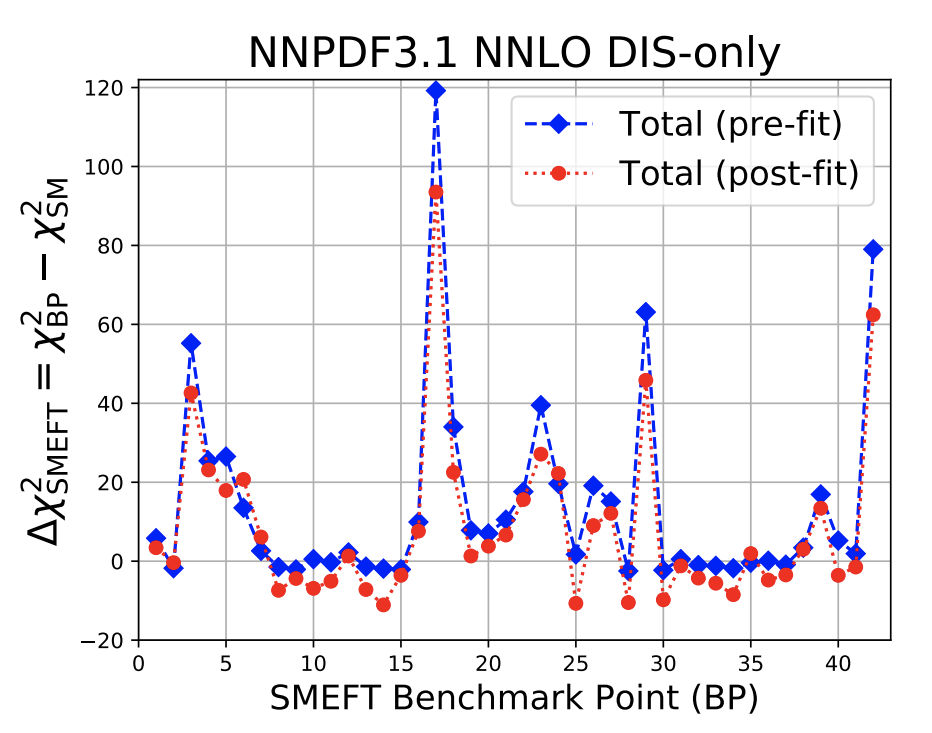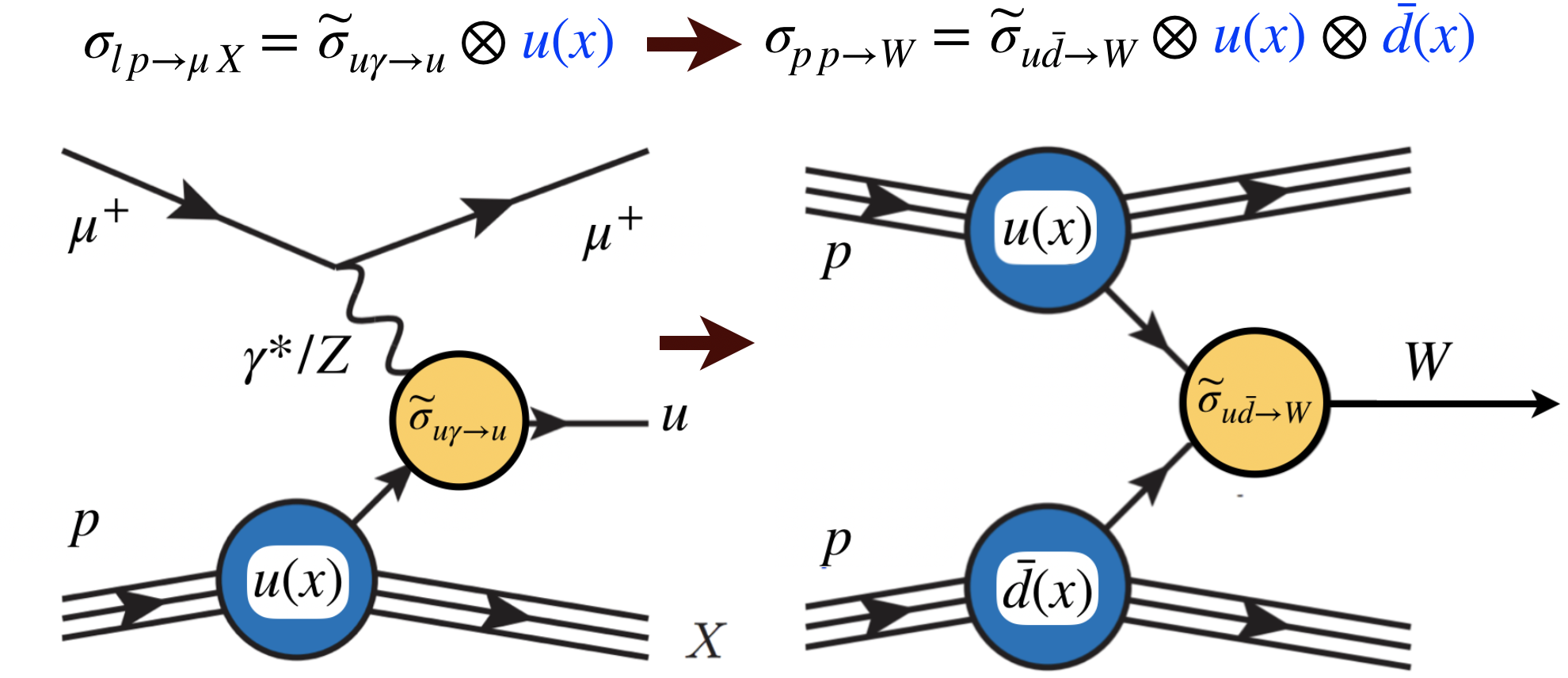Since I am still exploring the potentialities of the blog, I will try next to summarise one of my recent research publications, which addresses the rather non-trivial point of whether or not possible new physics beyond the Standard Model can be confounded by effects of the strong interaction. Let’s see how this works out!
At hadron colliders such as the Large Hadron Collider (LHC), one accelerates protons up to almost the speed of light and then makes them collide. By reconstructing the debris of such very energetic collisions, we can have access to the laws of nature at the smallest of the distances, well below the atomic or the nuclear radius. Since protons are not fundamental particles, the LHC is more of a Large Quark and Gluon Collider (LQGC), though it is unlikely that this acronym will catch up. Therefore, to be able to make predictions about what will happen at the LHC, for example how many Higgs bosons will be produced within a year, it is not enough to know the energy of the colliding protons: we also need to determine how this energy is distributed among the proton’s constituents, namely the quarks and gluons.

The information about the energy distribution of the quark and gluons in the proton is encoded by quantities called the Parton Distribution Functions (PDFs), see here for a rather extensive recent review. We cannot compute these PDFs from first principles, at least with current technology, so we need to extract them from experimental data using a global QCD analysis – basically a big fitting machinery where the parameters that define the PDFs are adjusted to maximise the agreement with the input experimental data.
A recent development in this context has been the availability of LHC measurements themselves to constrain the PDFs. For example, one can use the production of top quark pairs to obtain information on the gluon content of the proton. As you can see from the Feynman diagram below, the production of top quark pairs provides direct information on the gluon content of the proton. The same holds for many other processes, for example, the production of a lepton-antilepton pair, the so call Drell-Yan process, allows us to separate the quark and antiquark content, and disentangle different quark flavours among them.

As the LHC accumulates more and more data, these PDF-sensitive measurements start to probe higher and higher scales, well above the Higgs boson mass. While in our determination of the PDFs we always assume that the Standard Model calculations are valid everywhere, if new physics Beyond the Standard Model are present within the LHC reach (perhaps in the form of subtle deviations with respect the SM predictions) there is the real risk that they would be “fitted away” into the PDFs. In other words, you would be missing out a unique opportunity to identify deviations with respect to the Standard Model since you have reabsorbed them into the PDFs!
One possible way to eliminate this risk is by determining simultaneously the PDFs together with this possible New Physics effects. So in our paper we performed the first join extraction of the PDF parameters and of the coefficients of the Standard Model Effective Field Theory (SMEFT). The SMEFT is a powerful theoretical framework that encodes in a model-independent way the effects of any new physics scenario at high energies that reduces to the SM at low energies. The question we want to address is to which extent these SMEFT effects can be reabsorbed into the PDFs. In other words, is new physics hiding in plain sight and we are just fooling ourselves since we are fitting it away into our QCD parameters?
One first check is to perform a sampling of the SMEFT parameter space and run PDF fits for a number of benchmark points. Does the fit quality improve once these additional New Physics parameters are added? The answer is that it does, though not dramatically. As you can see below, the fit quality (quantified by the ) improves at the post-fit level, that is, once the PDFs are readjusted to match the change in underlying theory as compared to the SM assumption. The effect is not dramatic but noticeable, showing that yes, indeed, partially new physics effects can be absorbed into the PDFs.

If this is the case, how we can tell SM effects from possible new physics ones? One can exploit kinematical differences between effects that arise from the strong interaction (one of the three fundamental forces that compose the Standard Model) and those related to physics beyond the SM. They key aspect here is the different dependence on the energy of these effects. In the case of the strong force, as we go towards higher energies we expect differences that scale as
, while in the case of SMEFT corrections, they scale as
. In the previous equations,
is the typical mass scale of the strong interactions (basically one third of the proton mass) while
is the (unknown) energy scale where new physics beyond the SM appear. And indeed, if one plots the fit quality as a function of the energy of the process, one observes a very different trend in the case of the Standard Model (feeble dependence with the energy) and in the SMEFT case (strong sensitivity to changes in the energy). Such trend would be the smoking gun to disentangle QCD and new physics effects within the global fit.

To summarise, in this work we have successfully demonstrated how one can disentangle possible BSM effects within the global PDF analysis. The next step will be to carry out a more extensive interpretation of LHC measurements as well as to explore a basis as wide as possible in the SMEFT parameter space.

